- Home
- Joel C. Rosenberg
Epicenter 2.0 Page 14
Epicenter 2.0 Read online
Page 14
In the fall of 2005, fiction once again became reality:
AHMADINEJAD: WIPE ISRAEL OFF MAP
Aljazeera.net, October 26, 2005
WIPE ISRAEL “OFF THE MAP” SAYS IRANIAN
New York Times, October 27, 2005
ISRAEL SHOULD BE WIPED OFF MAP, SAYS IRAN’S PRESIDENT
The (U.K.) Guardian, October 27, 2005
Ahmadinejad, speaking at the “World without Zionism” conference in Tehran, not only told his fellow Islamic radicals that “Israel must be wiped off the map” because Israel is trying “satanically and deceitfully to gain control” of all of Palestine. He also warned that “anybody who recognizes Israel will burn in the fire of the Islamic nation’s fury” and any Islamic leader “who recognizes the Zionist regime means he is acknowledging the surrender and defeat of the Islamic world.” And he threatened the United States as well. “Is it possible for us to witness a world without America and Zionism? . . . [Y]ou had best know that this slogan and this goal are attainable, and surely can be achieved.”162
The remarks triggered widespread international condemnation, but Ahmadinejad did not back off. On December 9, he gave a speech in Mecca to the Organization of the Islamic Conference in which he called Israel a “tumor,” questioned whether the Holocaust had ever really happened, and suggested that if Europeans were so concerned about the fate of the Jews, they should move Israel to Europe.163
“THE POINT OF NO RETURN”
Ahmadinejad’s incendiary rhetoric against Israel and the U.S. should not be mistaken for empty threats, any more than Saddam Hussein’s threats to invade Kuwait were empty in the years leading up to August 2, 1990. Rather, Ahmadinejad’s words suggest a countdown to a new and terrible war in the Middle East.
In late 2005, during a trip to Israel, I met with one of the top Iran experts in the Mossad, Israel’s primary foreign-intelligence agency (the Israeli version of the CIA). “Please listen to what this regime is telling us, and please believe them,” the agent, an operative who himself spent years undercover inside Iran, told me. “The regime in Iran first and foremost is against the U.S., not Israel. Israel is just a tool to get to the U.S. Israel is the Little Satan. You are the Great Satan.
“Remember,” the Mossad agent continued, “the Iranians invented the chess board. They are playing three or four moves ahead of us. . . . We should remember Hitler and other Fascist regimes throughout history. They always signaled their ultimate intentions ahead of time. . . . A top advisor to Mahmoud Ahmadinejad recently said, ‘A clash between Islam and the West is inevitable, and we must be prepared.’ We ignore such warning at our peril. We must be prepared, too.”164
The Iranian leadership has certainly been preparing for a clash between Islam and the West as they feverishly try to build, buy, or steal nuclear weapons, as well as the missiles to deliver such weapons to their intended targets. In July of 1998, the Commission to Assess the Ballistic Missile Threat to the United States—headed by Donald Rumsfeld—issued a sobering report in which its members (top U.S. military and intelligence officials) unanimously concluded that “the only issue as to whether or not Iran may soon have or already has a nuclear weapon is the amount of fissile material available to it. Because of significant gaps in our knowledge, the U.S. is unlikely to know whether Iran possesses nuclear weapons until after the fact.”165
The commission found that Iran—whose missiles can already reach Tel Aviv, Paris, and London—could build an intercontinental ballistic missile capable of hitting the U.S. “within five years of a decision to proceed,” though again the members stressed that officials in Washington might not know when such a decision was made. They pointed out that “a 10,000 km-range Iranian missile could hold the U.S. at risk in an arc extending northeast of a line from Philadelphia, Pennsylvania, to St. Paul, Minnesota.”
Even more disturbing, the commission warned that countries such as Iran were seeking ways to launch Scud missiles off the back of a tramp steamer or other commercial container ship, putting Iranian nuclear, chemical, biological, or simply conventional warheads within range of major American, European, or Israeli cities with effectively no warning whatsoever.
And that was in 1998. Today the threat to the American homeland from an Iranian ship-launched missile has increased dramatically. “Some 75 percent of the total U.S. population of 290 million people and 75 percent of its military bases are within 200 miles of the coast,” reported a United Press International story in 2005. “The number of potential launch platforms is immense, with 130,000 registered merchant ships in 195 countries. . . . Thousands of SCUDs and other inexpensive short-range ballistic missiles have been dispersed, sold worldwide with some in countries where terrorist groups operate openly. Iran test-launched a tactical ballistic missile from a ship last year and the threat has become much worse with the rapid proliferation of cruise missiles. China has already supplied many to Iran.”166
Since the publication of the Rumsfeld commission’s report, we have learned much more, including the fact that for nearly two decades, Iran had successfully hidden expensive and sophisticated nuclear research facilities from U.S., Israeli, and other Western intelligence agencies. Only when a group of Iranian dissidents known as the National Council of Resistance held a press conference on August 14, 2002, revealing the existence and location of such facilities did the world have any idea just how aggressively Tehran was pursuing nuclear weapons.
In their Natanz facility, it turns out, the Iranians were planning to enrich uranium to weapons-grade standards. In their Ara-k facility, the Iranians were planning to extract plutonium for military purposes.
“We knew back in 2000–2001 that Iran had secret nuclear sites, and we were actually trying to find out where they were,” said David Albright, a former nuclear inspector for the International Atomic Energy Agency (IAEA). But when he finally found out, he admitted he was stunned by the magnitude of Iran’s efforts. “Within a few days [of finishing the Natanz and Ara-k facilities], they could make enough [nuclear fuel] for a bomb. Not just one bomb. The two massive underground facilities—each the size of a football field—are designed to hold 50,000 or more centrifuges. That could produce uranium for 25 to 50 nuclear bombs a year.”167
Kenneth Pollack, a high-ranking U.S. National Security Council official who was in charge of Iran and Persian Gulf affairs during the 1990s, admitted, “Despite the promises the Clinton administration had heard from Khatami’s informal interlocutors that the reformists [in the Iranian government] understood the United States’ concerns about Iran’s nuclear program and would work to accommodate us, Iran’s nuclear program had never slowed down. In fact, it had made tremendous progress.”168
During the writing of this book, I spoke to at least a half dozen senior Israeli military and intelligence officials who, on the condition of anonymity, told me that Iran either is at or is rapidly approaching what they call the “point of no return.” This is the point at which Iran will have all the technical know-how, trained scientists, bomb-making blueprints, enriched uranium, and other critical components to build a nuclear device.
Once the mullahs have all the chefs and ingredients they need to cook up their thermonuclear poison, these sources say that perfecting an actual bomb could happen very quickly. Some estimate Iran could have the “Islamic Bomb” called for by Rafsanjani as early as 2007. Others say sometime between 2008 and 2011 is more likely. But the truth is no one knows for sure, and that is what is so dangerous.
What we do know for sure is that Russia is helping speed the process, not slow it down. “I am sometimes asked if Iran wants to create such [nuclear] weapons or is thinking about the possibility, and I always reply that it does and is,” says Viktor Mikhailov, director of the Institute of Strategic Stability of Russia’s Ministry of Atomic Energy and widely considered one of the fathers of the Iranian nuclear industry. “It is impossible to retain national independence and sovereignty now without nuclear weapons. . . . I think that the nuclear sector of the Ir
anian economy is maintained at a very high research and technical level. . . . Iran will create—can create—its nuclear bomb in five to ten years. It will not be as sophisticated as the nuclear weapons of Russia or the U.S., but it will do. The Americans are afraid of this . . . because nuclear death can come not from the air but in many other ways. They fear a single nuclear explosion in their territory.”169
Over 1,000 Iranian nuclear scientists have been trained in Russia or by senior Russian scientists. Russia has vowed to finish building Iran’s first nuclear power plant in Bushehr (perhaps by 2007), despite intense international pressure to stop helping Iran go nuclear. Russia is also negotiating with Iran to build as many as twenty more nuclear power plants, despite the fact that Iran is sitting on an ocean of oil and natural gas and hardly suffering from a lack of energy supplies. Russian diplomats have repeatedly stalled efforts by the U.S. and the European Union (EU) to place sanctions on Iran for its illegal nuclear activities. And Vladimir Putin has put his personal stamp of approval on Russian nuclear assistance to Iran, despite Mahmoud Ahmadinejad’s vow to annihilate the Jewish state.
The question is why.
WHAT RUSSIA WANTS
“Russia has two interests in Iran,” Dr. Dore Gold told me when I saw him in Tel Aviv in the fall of 2005. “First, they want to resurrect the supposed glory of the Soviet Union. And second, they want to make money.”
I first met Gold, the former Israeli ambassador to the United Nations, during the summer of 2000 when Ehud Barak was trying to give away the store to Yasser Arafat. Gold, one of the first Israeli diplomats to ever meet personally with Arafat, had taken me inside Arafat’s thinking and helped me understand who he was and what he wanted. He was enormously helpful to me as I was doing research for The Last Days, and I later helped him promote the release of his New York Times best seller Hatred’s Kingdom: How Saudi Arabia Supports the New Global Terrorism.
But Gold was not only an expert on Arafat and the Saudis. He had also been closely monitoring Russian activities and ambitions in the Middle East for years and served as a senior advisor to Israeli prime minister Sharon.
“The Russians want an empire, and to get one they need to establish ‘special relationships’ with Arab and Islamic regimes in the Middle East whom they can use as their agents of influence,” he told me one morning over coffee. “From 1948 to the collapse of the Soviet Union, the Soviets were the main backers of the Arab threat to Israel. But they were never able to secure Iran as an ally until now. . . . Iran is pivotal in Russian thinking. It is a major regional power in its own right, and it is a gateway into the rest of the Middle East.”
What’s more, he noted, Moscow figures that a strong relationship with Iran lessens the likelihood that the mullahs will aggressively support the rebels in Chechnya or any other effort to foment a coup in the Russian capital.170
Gold, an American who emigrated to Israel, went on to argue that while Russia’s economy is much stronger today than it was in the early 1990s, that is largely due to the oil-and-gas industry. The military-industrial complex, on the other hand—the engine that for years provided millions of jobs for Russian workers—has been dramatically downsized since the end of the Cold War. Thus, Russia needs to sell billions of dollars’ worth of arms to countries like Iran or their military production facilities will have to scale down even more or shut down entirely. Unemployment would surge, as would poverty, thus increasing the possibility of domestic instability of the kind the Kremlin fears most.171
Dr. Yuri Shtern shares a similar assessment as Dore Gold but adds some color commentary from a unique vantage point. Born in Moscow in 1949, Shtern graduated from Moscow University with a PhD in economics. He agitated—as Natan Sharansky did—for Soviet Jewish rights until he was finally allowed to emigrate to Israel in 1981. There he managed a Jewish settlement in Judea and worked for a time for the Federation of Israeli Chambers of Commerce, trying to drum up business between Israel and the former USSR after years of pushing for boycotts of Soviet products due to Soviet persecution of Jews. In 1996 he was elected to serve as a member of the Knesset (the Israeli parliament) and is now the number-two official in Yisrael Beitenu, one of Israel’s fastest-growing political parties.
Shtern and I first met in February 2004 at the National Prayer Breakfast in Washington, DC, where he was part of a seven-person Israeli delegation. We met again at the Dan Panorama Hotel in Tel Aviv the following year, and I asked him why the country of his birth was arming his worst enemies.
“Russia—after Israel—is the second strangest place in the world,” Shtern told me one night after dinner. “It has a history of Christianity and education but also a deep tradition of tyranny. The danger now is that Russia may lurch back to tyranny.”
Part of the reason is that “Russia is in great danger of Islamicization,” and “it’s unbelievable how many Russian officials are being bought by Islamists” from Iran, Saudi Arabia, and elsewhere in the Middle East. That, Shtern said, is a big reason why Russia is helping Iran go nuclear. Russian workers need the jobs. Russian companies need the cash. Russian politicians are getting paid off. And he warned that more trouble lies ahead. While the world’s attention has been focused on the troubles in Iraq for the last several years, Shtern insists that “the future of the world is being shaped by Russia.”172
A few months before these meetings with Gold and Shtern, I sat down with Natan Sharansky at the Madison Hotel in Washington, DC, to talk to him about Putin, Iran, and the growing nuclear threat. At the time, he was still a member of Prime Minister Sharon’s cabinet, serving as Israel’s minister for Jerusalem and Diaspora Affairs. I was writing a story for World magazine about President Bush’s summit with President Putin in the Slovak capital of Bratislava.
I started by asking him about the big picture. “A growing number of observers in the West are concerned that Vladimir Putin is becoming a new Russian dictator. They point to the Kremlin’s takeover of television stations, jailing of political opponents, and ending democratic elections for the governors of Russia’s provinces. As someone who grew up in Russia and spent nine years in a KGB Gulag as a dissident, what is your sense about the future of democracy in Russia?”173
“We hear two types of statements these days,” Sharansky told me. “The first is that Russia went back to the past because Russians like their old totalitarian regimes, and that is proof that Russians can’t be democrats or don’t want democracy. This is nonsense. The other sentiment is that the Russian government is engaged in some serious retreats from democracy and the world should be concerned. That is absolutely true. Look, for a thousand years Russia never was a democracy. But I believe the Russian people want freedom and democracy. There have been tremendous changes there in the past ten or fifteen years. Millions of people are not enslaved in Gulags. Millions are not working for the KGB. Millions do not live in fear that one mistaken word and they’ll be thrown in prison. This is real, historic progress. That said, there have been some serious retreats. But look, twelve years after the French revolution there was Napoleon. There are ups and downs in the development of democracy in any country. Now Putin is restricting many areas of Russian life. The free world should not be hesitant to raise these issues and encourage the Russian government to expand freedom, not restrict it.”
I asked him why he thought Russia was selling nuclear technology to Iran when Iran was widely recognized as a terrorist state and, in President Bush’s famous phrase, part of the Axis of Evil.
“Well, you know that I was involved for a long time in the negotiations to persuade the Russians to stop selling these technologies to Iran,” Sharansky explained, noting his meetings with Putin and “many other meetings with Russian leaders over the years” on this issue. “And it is important to point out that it wasn’t the Russian government that was directly selling the technologies. It was various Russian companies, and the Kremlin wasn’t fighting it enough. . . . Putin told me personally—and he happened to be absolutely right about this�
��that the day will come when it is clear that it is Western sales of technologies to Iran which will be just as critical to helping Iran develop weapons of mass destruction, maybe more so, not just Russian technologies. And sure enough, a year ago when the scope of Iranian activities were discovered, everyone could see that the technologies that flowed through Pakistan, England, and Holland have created a big danger that within one or two more years Iran will develop nuclear weapons.”
“Nevertheless, does your government believe this emerging Russian-Iranian alliance is a direct threat to Israel’s national security?” I asked.
“The free world is blind to taking effective measures to stopping this impending disaster,” he replied. “Now it must be clear that the free world cannot afford to permit the regime of the Ayatollahs to have nuclear weapons and the missiles to deliver them. The Iranians have made themselves perfectly clear. They intend to destroy Israel and the other ‘Satans’ in this world.”
“What should be done to stop Iran from acquiring the bomb?” I wondered.
“As I point out in my book [The Case for Democracy], Iran is a unique example of a country where in one generation a society of true believers in radical Islam has become a society of double-thinkers,” said Sharansky. “That is, in their hearts and minds they are disgusted with their government and disillusioned with radical Islam, even though with their lips they must avoid being critical because they fear government reprisals. There are many Iranians eager to change their government. With some encouragement from the free world I think we can help the people of Iran to bring democratic change. I was glad to see President Bush speak directly to the Iranian people in his State of the Union address. But it is not enough. The United States and Europe—the entire free world—must do much more to encourage the forces of freedom and reform within Iran, before it is too late.”

 The Copper Scroll
The Copper Scroll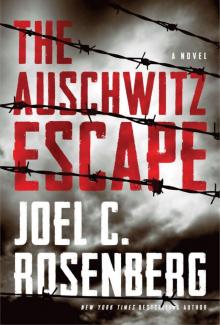 The Auschwitz Escape
The Auschwitz Escape The Last Jihad
The Last Jihad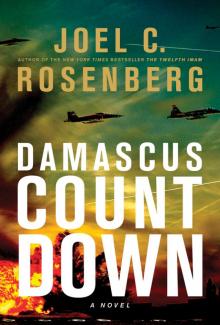 Damascus Countdown
Damascus Countdown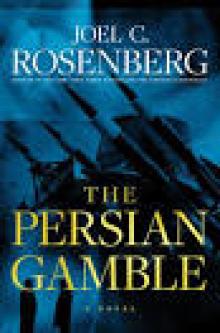 The Persian Gamble
The Persian Gamble The Jerusalem Assassin
The Jerusalem Assassin Dead Heat
Dead Heat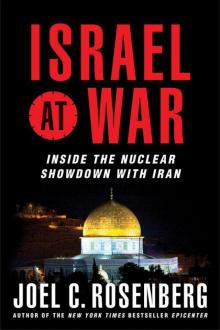 Israel at War: Inside the Nuclear Showdown With Iran
Israel at War: Inside the Nuclear Showdown With Iran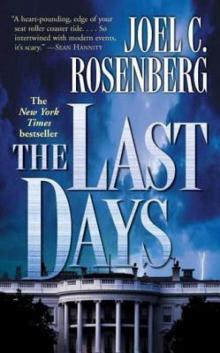 The Last Days
The Last Days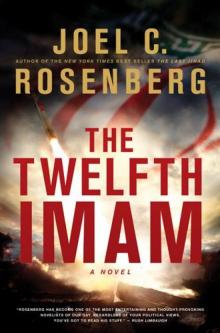 The Twelfth Imam
The Twelfth Imam Epicenter 2.0
Epicenter 2.0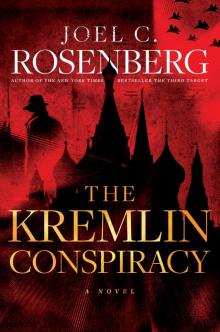 The Kremlin Conspiracy
The Kremlin Conspiracy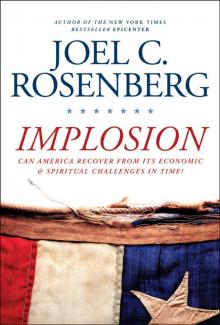 Implosion: Can America Recover From Its Economic and Spiritual Challenges in Time?
Implosion: Can America Recover From Its Economic and Spiritual Challenges in Time? The Third Target: A J. B. Collins Novel
The Third Target: A J. B. Collins Novel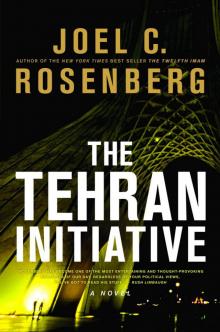 The Tehran Initiative
The Tehran Initiative Inside the Revolution
Inside the Revolution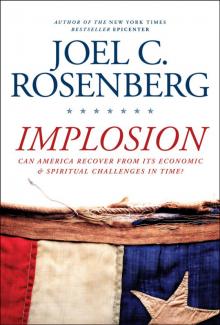 Implosion
Implosion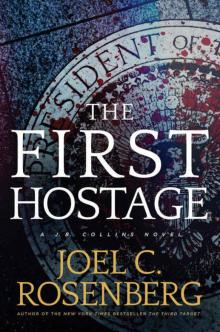 The First Hostage: A J. B. Collins Novel
The First Hostage: A J. B. Collins Novel